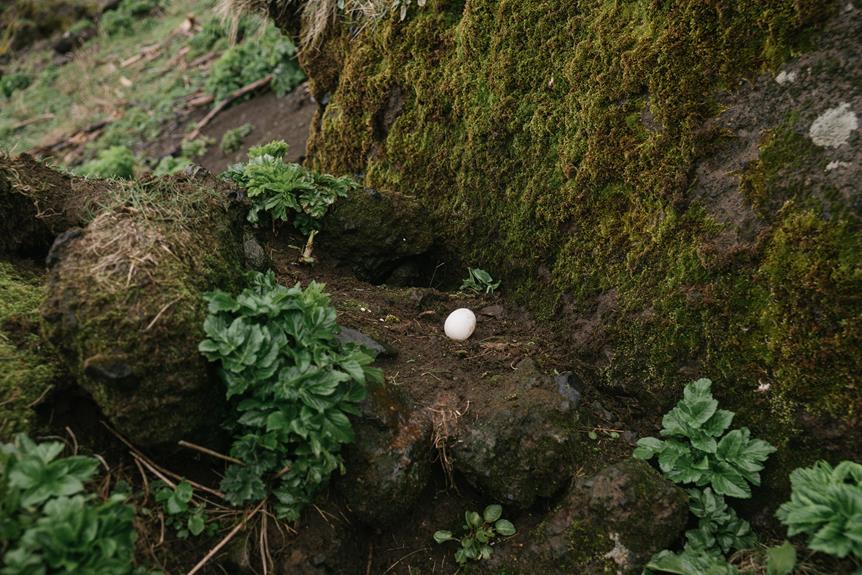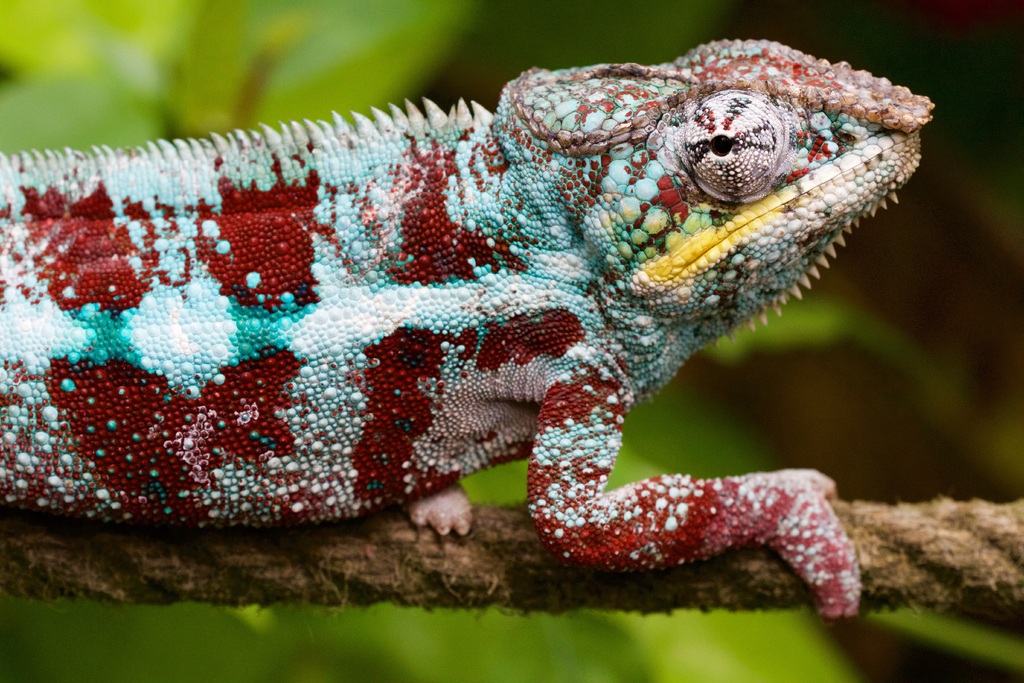Delve into the diverse world of monitor lizard egg development and hatching. Discover the intricate process of embryonic development, from fertilization to gastrulation.
Explore the crucial role of incubation conditions, such as temperature and humidity, in ensuring successful hatching.
Uncover the fascinating mechanisms by which monitor lizard hatchlings break out of their eggshells.
Examine the elusive concept of parental care in these reptiles.
Prepare to be astounded by the contrasting patterns of egg development and hatching across various monitor lizard species.
Key Takeaways
- Gastrulation is a crucial process in embryonic development that involves cellular differentiation and the formation of specialized cells.
- The incubation conditions, including temperature and humidity, play a vital role in the successful hatching of reptile embryos, and different monitor lizard species have specific requirements.
- Monitor lizard hatchlings have specialized mechanisms, including an egg tooth, muscular contractions, and rotational movements, to break through the eggshell during hatching.
- Unlike some reptiles, monitor lizards do not actively guard their nests or exhibit active parental care behaviors, and the survival of their eggs depends on environmental factors.
Embryonic Development: From Fertilization to Gastrulation
During embryonic development, you'll witness the remarkable process from fertilization to gastrulation. This stage in the development of an embryo is crucial for the formation of specialized cells and the development of the central nervous system.
Cellular differentiation is the process by which cells become specialized and take on specific functions. It occurs during gastrulation, where the embryo undergoes a series of complex cellular movements and rearrangements.
The inner cell mass differentiates into three germ layers: ectoderm, mesoderm, and endoderm. Neural tube formation, an important part of gastrulation, is responsible for the development of the central nervous system. The neural tube will eventually give rise to the brain and spinal cord.
This intricate process highlights the amazing potential and complexity of embryonic development.
Incubation Conditions: Temperature and Humidity Requirements
To ensure successful incubation, you need to provide the appropriate temperature and humidity conditions for monitor lizard eggs. Incubation techniques play a crucial role in the development of reptile embryos, as environmental influences can significantly impact their growth and survival. Temperature and humidity requirements vary among different monitor lizard species, so it's essential to understand the specific needs of the eggs you're incubating.
To assist you in creating the optimal conditions, refer to the table below, which outlines the recommended temperature and humidity ranges for various monitor lizard species during incubation. By carefully controlling these factors, you can maximize the chances of a healthy and successful hatching process.
Now, let's delve into the next section, where we'll explore the fascinating hatching mechanisms and how monitor lizard embryos break out of their eggshells.
Hatching Mechanisms: Breaking Out of the Eggshell
You might be wondering how monitor lizard embryos manage to break out of their eggshells. The process of hatching in monitor lizards involves several steps:
- Shell penetration: Monitor lizard hatchlings have a specialized egg tooth at the tip of their snout, which they use to break through the tough eggshell. This tooth is shed shortly after hatching.
- Muscular contractions: Once the eggshell is penetrated, the hatchling begins to use its muscles to push against the shell from the inside, gradually creating a small hole.
- Rotational movements: The hatchling rotates its body within the egg to widen the hole and create more space for itself.
- Final burst: When the hole is large enough, the hatchling uses its legs and body to push against the weakened section of the shell, finally breaking free.
The duration of the hatching process in monitor lizards can be influenced by factors such as temperature, humidity, and genetic factors. These variables can impact the development and strength of the hatchling's muscles and egg tooth.
In the subsequent section, we'll explore the parental care strategies of monitor lizards and investigate whether they protect their eggs.
Parental Care Strategies: Do Monitor Lizards Protect Their Eggs
Do monitor lizards exhibit protective behaviors towards their eggs?
The question of whether monitor lizards engage in parental care and protect their eggs is a subject of interest among researchers. Parental investment is an important aspect of reproductive success, and many reptiles, including some lizard species, show varying degrees of parental care.
However, when it comes to monitor lizards, the evidence suggests that they don't actively guard their nests. Monitor lizards are known to lay their eggs in underground burrows or other concealed locations, which provides some level of protection. However, once the eggs are laid, the female monitor lizard doesn't exhibit any further protective behaviors. Instead, the survival of the eggs largely depends on environmental factors such as temperature and humidity.
Therefore, in terms of nest guarding and active parental care, monitor lizards don't display these behaviors.
Species Variations: Contrasting Egg Development and Hatching Patterns
Different monitor lizard species exhibit contrasting patterns of egg development and hatching. These variations are the result of evolutionary adaptations and reproductive strategies that have been shaped over time. Here are four key points to help you understand the species variations in egg development and hatching patterns:
- Incubation period: The duration of egg incubation varies among monitor lizard species, ranging from a few months to over a year. This variation is influenced by factors such as temperature, humidity, and parental care.
- Nesting behavior: Different species display diverse nesting behaviors. Some monitor lizards construct elaborate nests with carefully arranged vegetation, while others simply lay their eggs in burrows or leaf litter.
- Temperature-dependent sex determination: Many monitor lizard species exhibit temperature-dependent sex determination, where the temperature at which the eggs are incubated determines the sex of the offspring. This adaptation allows them to adjust the sex ratio according to environmental conditions.
- Hatching behavior: The hatching process also varies among species. Some monitor lizard hatchlings emerge from the eggs independently, while others may require assistance from the mother or siblings to break free from the eggshell.
Understanding these species variations in egg development and hatching patterns provides valuable insights into the reproductive strategies and evolutionary adaptations of monitor lizards.
Frequently Asked Questions
How Long Does It Take for a Monitor Lizard Egg to Hatch?
It takes a monitor lizard egg about 50-70 days to hatch. During this time, the egg goes through various development stages, which are influenced by factors such as incubation temperature.
What Are the Primary Factors That Influence the Success of Monitor Lizard Egg Hatching?
Factors affecting hatching success in monitor lizard eggs include temperature, humidity, and substrate composition. These factors influence egg development, affecting the embryo's growth and ultimately determining the success of hatching.
Do Monitor Lizards Exhibit Any Unique Behaviors During the Incubation Period?
During the incubation period, monitor lizards exhibit unique behaviors. These behaviors may include nest guarding, temperature regulation, and occasional egg rotation. These actions are crucial for ensuring the success of hatching in monitor lizard species.
Are There Any Notable Differences in the Incubation Period or Hatching Process Among Different Monitor Lizard Species?
When it comes to the incubation period and hatching process in different monitor lizard species, there are notable differences. These include variations in temperature affecting egg development and variations in incubation periods among the species.
Are There Any Known Threats or Challenges That Monitor Lizard Eggs Face During Development and Hatching?
During the development and hatching process, monitor lizard eggs face various threats and challenges. Environmental factors, such as temperature fluctuations and predation, can greatly impact egg development and survival.
Conclusion
You have now gained insight into the intricate process of egg development and hatching in various monitor lizard species.
A fascinating statistic to highlight the diversity among these reptiles is that some species exhibit a remarkably short incubation period of just 70 days, while others can take up to 180 days to hatch.
This significant variation underscores the crucial role of environmental factors, such as temperature and humidity, in shaping the developmental timeline of monitor lizard embryos.
Further research is warranted to explore the underlying mechanisms behind these divergent patterns.


